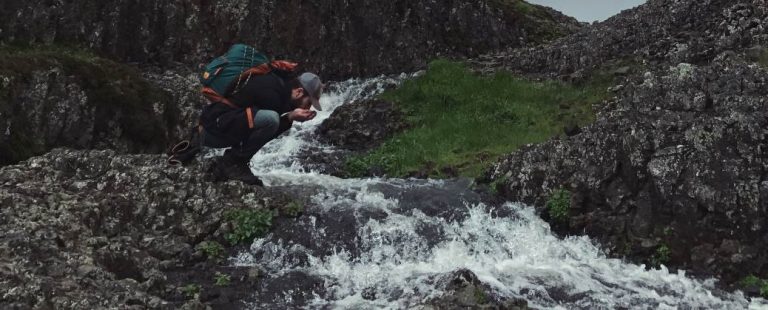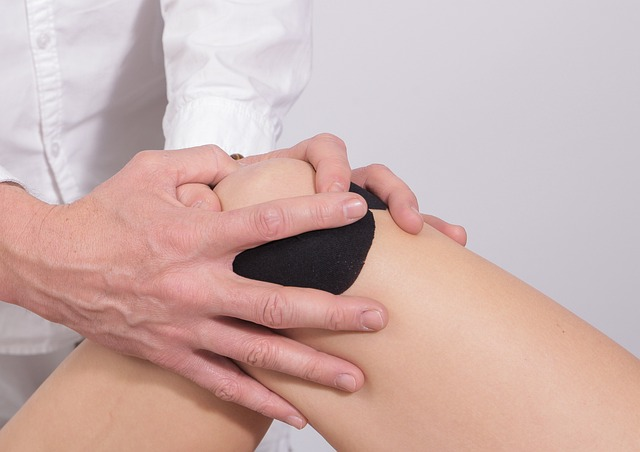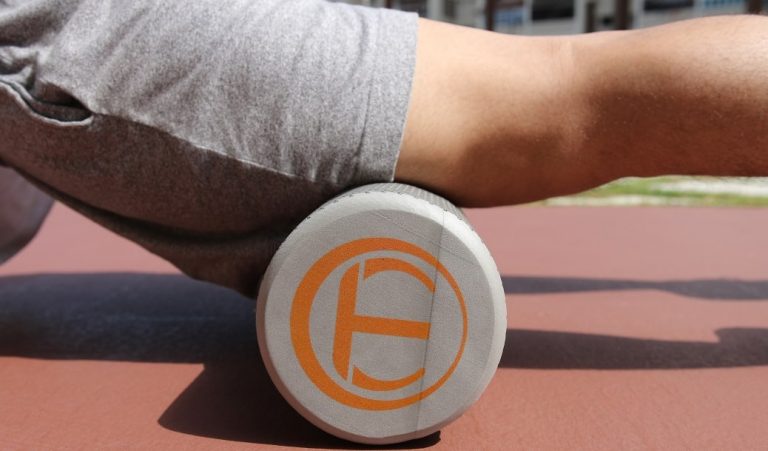Tips and Best Gear for Running in Cold Weather and Winter
Sound off if you’ve been in a situation like this before. You decide to go for a nice, impromptu run. You put on some loose-fitting clothes, do your warm-up, and drink an ice-cold bottle of water. Then the moment finally arrives for you to begin, only to open the door and realize the weather outside is frightful. Yep, we’ve all been there before. That’s why it’s imperative to know all the tips and have all the gear needed for running in cold weather and winter.
Some may find that the summer is the ideal time for running, but that doesn’t mean you should hibernate during the winter. After all, running in cold weather is so much fun. Not only is there a lot less sweat involved thanks to the lack of sun and accessible wind. The cold weather also gives you an excuse to change up your normal running wardrobe, switching those basketball shorts and tank-tops for sweatpants and long-sleeve shirts.
Plus, with winter comes the added benefit of snowfall in some areas. This is a game changer for two reasons: 1) it provides an exciting change of scenery as you run down your normal route; 2) running in snow provides better traction and requires a different kind of muscle movement than traditional roads.
Any way you slice it, winter is a great time for running. But before you embark on your reindeer games, there’s a few things you should know.
Tips for Running in Cold Weather and Winter
Before you start running in cold weather and winter, make sure to review these tips. Doing so will not only make your run more enjoyable, but keep you safe.
Tip 1: Hit the Ground Running
The key to running in cold weather is (ironically enough) spending as little time outside as possible. No, that does not mean staying home and hitting the treadmill by the fireplace instead. It means try to make sure that once you’re outside you waste no time beginning your run.
Conversely, once you’re done running, get inside as soon as humanly possible. Do not pass go, and do not collect hypothermia. Part of that includes relegating your warm-ups, breaks, and cool-downs to somewhere indoors.
Tip 2: Dress For Success
On paper, this may seem like a pretty straightforward tip. It’s cold outside, so bundle up, wear layers, and avoid loose-fitting clothes, right? Wrong! We will get to some recommended cold weather workout gear in a bit, but there’s a general rule of thumb worth learning before running to Burlington Coat Factory.
On the one hand, it is very important to protect yourself whenever you run out in the cold. That means wearing layers and protecting the extremities you normally don’t cover during warm weather. This includes your head, face, hands, calves, groin, and feet. Don’t automatically assume that means wear a coat, scarf, sweatshirt, or jeans, as these are counterproductive to running.
On the other hand, you don’t want to overdo it. Believe it or not, there is such a thing as being too warm when you’re running in the winter. Remember, winter running is just like any other run, and running causes sweat. The difference is that being too warm in hot weather causes you to tire out faster. Being too warm in cold weather increases your odds of freezing. You don’t want to know the excruciating feeling of wearing a shirt drenched in sweat out in the cold.
Don’t Forget Wind Chill
The best way to prevent either of these extremes is to pay close attention to the weather and wind chill. Place due emphasis on the wind chill as this is what you’ll be feeling when outside. A good rule of thumb when it comes to striking that happy medium would be dressing as if it’s ten degrees hotter than the wind chill. That way, you’ll start off a bit cold and get warmer as time goes on during your winter run.
Your mileage may vary, though. So, try using this as a general guideline. Pay close attention to your body to see how you can tweak it to your liking.
Tip 3: Don’t Forget to Hydrate
It’s easy to assume that with the cold air and blustering wind hitting your face that you may not really need to hydrate. However, just as mentioned earlier, a run in the cold is the same as any other run. In fact, your body may be working harder, given your likelihood of running on snow. Your body will become hot after a while and you can dehydrate because of it. Take it from any runner or athlete that came before you. Dehydrating is as awful of a feeling as it is dangerous. So, please, don’t leave the water bottles at home.
Also, because a few of you are no doubt thinking it, hot cocoa and coffee are NOT worthy substitutes for water. You’re welcome in advance.

Tip 4: Mind Your Step
Whether you’re a novice, recreational, or professional runner, odds are that everyone can agree with the following statement: The quality of a good run is directly determined by our ability to do so while not slipping and falling. There’s just something about slipping on some unseen ice that’s kind of a mood-killer (and a bone-breaker). Needless to say, if you don’t want your next winter run to be your last for a while, best pay close attention to where you’re stepping.
True, that’s much easier said than done. After all, black ice isn’t all that easy to spot on a whim. That’s why a good way to get around the risk is to avoid the road as much as possible. Preferably, try to run on the snow or grass, since ice doesn’t build on those places easily. However, if you must run on the sidewalk or road, just keep your eyes peeled for any questionable surface. If you see something suspicious, walk around it as best you can. Remember, it only takes one slip up to… slip up.
Tip 5: Know Your Limits
There’s nothing like the exhilarating feeling of a runner’s high. When you’re in the heat of the moment and feel like nothing short of your feet falling off could get in the way of your stride. Those are moments that runners live for, though all good things must come to an end sometimes. This is especially true when it comes to extreme weather — whether hot or cold. Running in cold weather is no exception, and you must take a conservative view to be safe.
Every athlete knows the importance of admitting their limitations. It’s a hard lesson to learn, especially for those who are goal-driven or routine-oriented. Plus, since everyone is different it may be easy to assume you can handle going just another mile longer just because your cold-blooded friends can. However, sometimes there are things you shouldn’t do on a 10-degree day that you normally would on a 60 degree day. Don’t be afraid to alter the length of your run depending on the temperature (like the aforementioned clothing tip above). At the end of the day it’s for the greater good.
Don’t think this means you shouldn’t push yourself. Just always know when to walk away. Speaking of which…
Tip 6: Cool-Down By Warming Up
Cooling-down takes on a whole new meaning during the winter than it does the summer. As backwards as it may sound, the goal of cooling-down is warming-up.
The first thing you should do during your post-run is head straight indoors. As soon as the door closes, get out of those workout clothes immediately. Your post-run rituals can wait long enough for you to warm your body up. (I’m talking hot showers, sweaters, fuzzy slippers, the works). Perform your cool-down right next to the nearest fireplace or heater and wrap up your successful winter run with a refreshing hot beverage.
Bonus Tip: Don’t Go Solo
This one is totally optional but also highly recommended. Like most things in life, running is an activity that’s best enjoyed among good company. So, whenever possible, try and grab a close friend, relative, romantic partner, or pet to come along with you. Alternatively, check your area for any local running groups or events happening around you. Not only does company make your running experience more engaging. It also works as an effective motivator to get you out the door.
–
How to Warm Up Safely After Running in the Cold
Many runners are hesitant to run in the cold winter. The winter brings cold weather, ice, and can be unpleasant in general. For those who are brave enough to run outdoors, it is important to safely warm up after running in the cold. There can be serious health consequences if runners do not heat up properly after their run. Follow these steps to find out how to warm up safely after your winter run.
Proper Layers
Before venturing outside, be sure you are properly dressed for a winter run. Wear thick and warm layers to keep your body at a healthy temperature. Additionally, try to cover up as much as possible to avoid the cold and piercing wind. Many runners like to wear a hat or ear coverings and gloves when they run outdoors.
Slowly Warm Up the Body to Prevent Shock
The first step after a run is removing all of your cold and sweaty clothes. It is not healthy for your body to experience an intense cold to an intense warm. As soon as your run finishes, change out of your running clothes into something warm and dry. It is possible to prevent an uncomfortable cold sweat if you change or hop in the shower right away. Be cautious to warm up slowly, a blast of heat after being cold puts tremendous stress on the body, especially the heart.
Stretching: Don’t Underestimate the Stress on the Body
After getting warm, be sure to stretch. Your body is working extra hard while running during the winter as you are running on ice and snow. Your lower legs will feel sore after your run, even if they do not feel sore right after you finish. Be sure to stretch and roll out to fully relax your muscles. Plus, stretching after a run is important to prevent injury. Take the time to stretch after you warm up after running in the cold.
Refuel: Dehydration Can Happen in Winter
Additionally, be sure to properly fuel before and after your run. Fueling before a long run in the winter is especially important. A warm drink after your long run is a great way to start. This helps warm the body from the inside before you add more fuel through the traditional electrolytes, proteins, and fats.
Watch the Stress on Your Heart in the Cold
Long distance runners should be cautious of running too much and causing a running heart attack, especially in the cold. Running heart attacks occur after prolonged runs, such as marathons.
After three to five hours, the thinner heart chambers can be overloaded, thus resulting in the creation of scar tissue. Repeated long runs can cause more scar tissue to build up. For some people, a build-up of scar tissue in the heart can lead to a running heart attack. Heart attacks can occur with stress, and as your body transitions from cold to warm, even if your run was slow, it can put you at risk. This is why it is some imperative to warm up slowly after your cold run.
–
Best Gear for Running in Cold Weather and Winter
You may notice that winter running isn’t solely about what you know. It’s also about what clothes, tools, and gear you have to make the whole experience easier. Here are just some essential winter running gear recommendations for you to consider.
One note before we dive in. As a general standard, most of the clothing mentioned here will be made from either polyester or Merino wool. These are the two best material options for runners as it does a great job maintaining insulation when wet.
Compression Shirts/Baselayers
For most people, your winning combination when it comes to shirts and pants is going to be compression clothes and something fairly light to go over it. The overshirt is for protecting you from the cold, while baselayers keep your body properly ventilated. Take for instance the Tesla Mesh-Side-Back Panel Long-Sleeved Compression Baselayer. It consists of about one-eighth spandex, while the rest is pure polyester. It dries quickly, cools the body down well, and is surprisingly comfortable for more than just winter. Way handier than expected.
Jackets
As far as cold weather workout gear goes, there’s some debate as to whether jackets are necessary for runners. In fact, many runners would say that it’s very rare for them to take a jacket on a run. However, it’s always best to be prepared. The best running jackets are those that are warm when you need them to be yet breathable enough to not make you sweat even more. Plus, a good jacket can be easily shed in case the weather warms up.
One such jacket is the ARSUXEO Winter Thermal Fleece Cycling Jacket. It comes in multiple colors (one is red), and is made with cyclists in mind. While this does contain fleece and can be very warm with the zipper on, it is still perfectly breathable when unzipped. Plus, it has a reflective logo, which is extremely useful for evening use. (We’ll revisit that in a second).
Pants
When shopping for good athletic or compression pants, the same rules mentioned for baselayers apply here. There is a slight deviation, though. You should find pants that accomplish the following two things: 1) mobility to help you maintain full range of motion; 2) isolated heating properties, specifically for your groin region.
Consider the 4ucycling Windproof Athletic Pants as an example. Despite the name, these 4ucycling athletic pants are actually a multi-sports product. All the basic components of proper running pants appear to be present here. The material is a blend of polyester and spandex, with similar airing factors to the Tesla baselayer. It’s reflective logo also goes nicely with the jacket. The difference is in its flexibility. The adjustable leg openings are a real game changer in making sure the pants are as comfortable as possible.
Gloves/Mittens
For all of the emphasis on breathable, aerodynamic, and light-weight material, none of that applies when it comes to the topic of hand-wear. Our hands are one of the few things you can afford to keep as warm as possible, so non-breathable is totally fine. Although, there does exist some runner-specific gloves on the market, like TrailHead’s Touchscreen Convertible Running Gloves with a Waterproof Mitten Shell.
These may be a bit up there in price but are well worth it for how multipurpose they are. These are convertible gloves that act as regular, five-fingered, running gloves and (more importantly) waterproof mittens. The latter part is so vital because keeping your fingers together increases your odds of warming your hands. Plus, these gloves are touchscreen friendly — a miracle for those who like to the sweet sound of music.
Socks
These boots may be for walking, but your socks should be made for running. It’s important to find footwear that can keep, perhaps, the most vital of extremities for a runner (your feet) cozy, warm, and protected. The Darn Tough line of athletic socks is a great example. They’re typically meant for hikers, though runners should find similar effectiveness with its Merino wool build. Best of all, Darn Tough provides plenty of options for those looking for no-shows or high-ankle socks.
Headlamps
Finally, you may have noticed the emphasis on reflective cold weather running gear: namely the jacket, pants, and glove examples. This is vitally important for those who plan to run during a cold winter’s evening. It lets drivers know when you’re in their path, keeping both of you safe. However, more important than simply being seen is also the ability to see where you’re going. So, please don’t plan a cold evening run before you get your hands on some kind of headlamp.
Luckily, the TitanOps 5-LED UltraBright Winter Knit Flashlight Beanie provides an excellent compromise to those who need the light without the hassle of a traditional headlamp. In addition to its ability to keep your head warm, it has an LED, built-in flashlight which allows you to see up to 42 feet (12.8 meters) in front of you. It’s a great way to kill two birds with one stone.
Check out the Top 11 Best Lights for Running at Night for a comprehensive list of options and what to consider.
–
Final Thoughts
Some may dread the thought of running in anything but warm weather. Others may have just had a bad experience doing a cold weather run while unprepared. However, if one thing can be made clear to those skeptical of how enjoyable and rewarding winter running can be, it’s that everything can be made better with the right tools at your disposal. Now that you’ve learned all the necessary tips and obtained all the necessary winter running gear, hopefully you won’t choose to let Jack Frost force you into hibernation this winter. Instead, get on out there and dash away!
[starbox]






